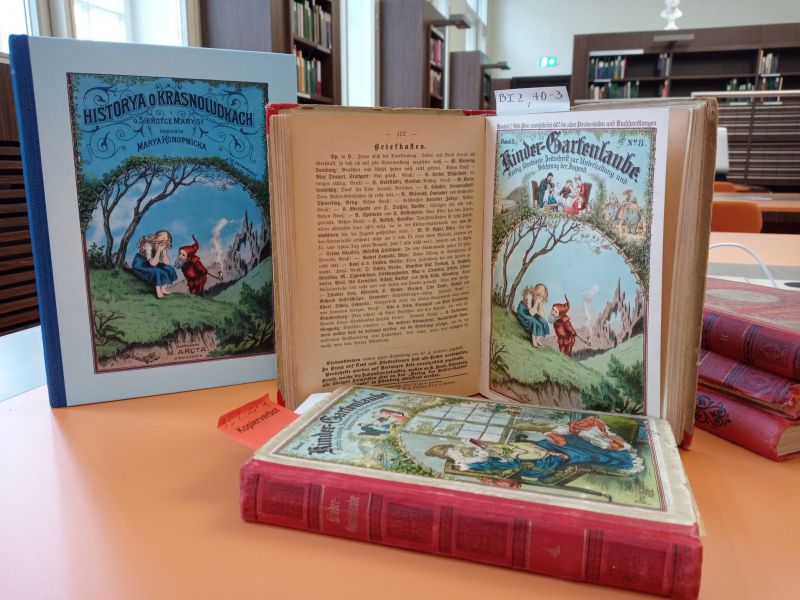There are very few adult Polish people who would not be familiar with the illustrations accompanying the story of "Little Orphan Mary and Gnomes" by Maria Konopnicka, among which the most characteristic ones are probably those by Jan Marcin Szancer. Interestingly, until recently, it was not known what the first edition of the book from 1896, considered lost for many decades, looked like. A unique copy of this edition was purchased by the Polish National Library in 2016, but the origin of the twelve colour lithographs included in it, which, according to some researchers, dated from Germany, was still unknown. It was not until the Children's Literature and Culture Research Team from the AMU Faculty of Polish and Classical Philology (WFPiK), led by the University Rector, Professor Bogumiła Kaniewska, that this origin was discovered.
As we can learn from the Facebook page of the Team, the first hypotheses on the origin of the illustrations emerged during a seminar devoted to Maria Konopnicka held at the AMU WFPiK in June 2022. Subsequently, in August 2022, Anna Czernow, PhD, and Aleksandra Wieczorkiewicz, PhD, visited the Berlin Staatsbibliothek to examine lithographs from the magazine published in Nuremberg in 1886-1891, 'Kinder-Gartenlaube. Farbig illustrierte Zeitschrift zur Unterhaltung und Belehrung der Jugend', supposing that they might be the sought-after illustration source for a Polish children's book. The hypothesis turned out to be correct! A detailed look at all the magazine issues, made possible by the search, particularly the view of the cover of one of them presented by the first photo, left no doubt as to where Michał Arct, the publisher of Konopnicka's fairy tale, had taken the lithographs for the first edition of the book.
And what about the intellectual property rights to the illustrations? Did Michał Arct ask the German publishers for permission to use them? Unfortunately, nothing is known for sure at this point: Arct's archive was mostly destroyed during the war, and the archive in Nuremberg has not yet been reached. However, our researchers surmise that Michal Arct must have been in contact with a German studio to acquire the lithographs. Another point remains that in the 19th century, 'borrowing' other people's graphic material without the author's knowledge and permission was the order of the day, notably in the mass production of books and periodicals. It must also be remembered that copyright law was not in force as we know it today. As is usually the case, discoveries of this kind raise further, extremely significant questions - are the illustrations the only thing taken from a German children's magazine? Or does the content of 'O dwarfs and orphan girl Mary' also bear traces of similar borrowing?
The illustrations' history and the discovery of their origin are attractive for yet another reason - recently, at the beginning of June this year, Michał Kazimierz Gajzler published on his blog the results of a search he conducted in 2023, leading him to discover the German source of illustrations for Maria Konopnicka's " Little Orphan Mary and Gnomes". It would not be the first time in the history of science that an influential discovery was made (almost) simultaneously by different, independent researchers!
The Team's research is carried out within the framework of the OPUS 21 grant of the National Science Centre entitled "Half a century of Polish children's literature. Children's literature in the circle of






